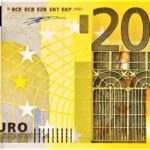EURUSD strengthens as increased speculation about Fed rate reduction in September weighs on the US dollar.
In Monday’s European session, EURUSD stabilized above round-level support at 1.0800. The major currency pair stays solid, with the US Dollar (USD) under pressure from mounting anticipation that the Federal Reserve (Fed) would begin cutting interest rates at its September meeting.
The US labor market appears to have lost momentum.
The US Dollar Index (DXY), which tracks the Greenback’s value against six major currencies, is hovering at 104.85, a three-week low.
Market expectations for the Fed interest rate Cut bets climbed significantly in September, indicating that the US labor market is losing momentum. The US Nonfarm Payrolls (NFP) report for June indicated a slowdown in labor demand, with updated estimates revealing that the number of people hired in April and May was 110K lower than originally thought. Also, the unemployment rate unexpectedly increased to 4.1% from the consensus and previous report of 4.0%.
In addition, the momentum of pay growth looks to have slowed in June, reducing upside inflation concerns. The US NFP report showed that Average Hourly Earnings, a measure of wage growth, fell as expected on a monthly and annual basis.
Cooling labor market strength supports early Fed rate cuts. According to CME FedWatch. The 30-day Federal Funds futures price data reveals that the probability of rate reduction in September has grown to 75.8% from 64% a week ago.
Going forward, investors will be closely watching the June US Consumer Price Index (CPI) report, which will be released on Thursday. Investors will closely monitor inflation to see if the disinflation process, which stalled in the first quarter, has restarted.
Daily market movers: EURUSD remains steady despite worry about the Euro’s outlook.
The EURUSD is holding gains despite the Euro’s uncertain outlook, as exit polls show that a coalition government will emerge in France, the Eurozone’s second-largest economy. Polls indicated that the left wing, also known as the New Popular Front, led by Jean-Luc Mélenchon, surprisingly President Emmanuel Macron’s moderate alliance won out, with Marine Le Pen’s far-right National Rally coming in second.
The failure of any party to secure an outright majority has heightened concern about France’s fiscal situation. This would force the Centralist Alliance to engage in intense discussions with the Left Wing to allocate new ministries and elect a new Prime Minister. Meanwhile, Jean-Luc Mélenchon recommended that French Prime Minister Emmanuel Macron resign and the left wing be given the authority to control the economy.
On the monetary policy front, rising risks of inflation being sticky have reduced expectations that the European Central Bank (ECB) will slash interest rates again. Officials from the European Central Bank will meet on July 18 to make interest-rate decisions.
In June, the preliminary Eurozone Harmonized Index of Consumer Prices (HICP) increased steadily by 2.9% year on year, with service inflation remaining stubbornly high at 4.1%. At the ECB Forum on Central Banking in Sintra, Portugal, ECB President Christine Lagarde stated, “The disinflationary path will continue, but we need to be particularly attentive to services.”









